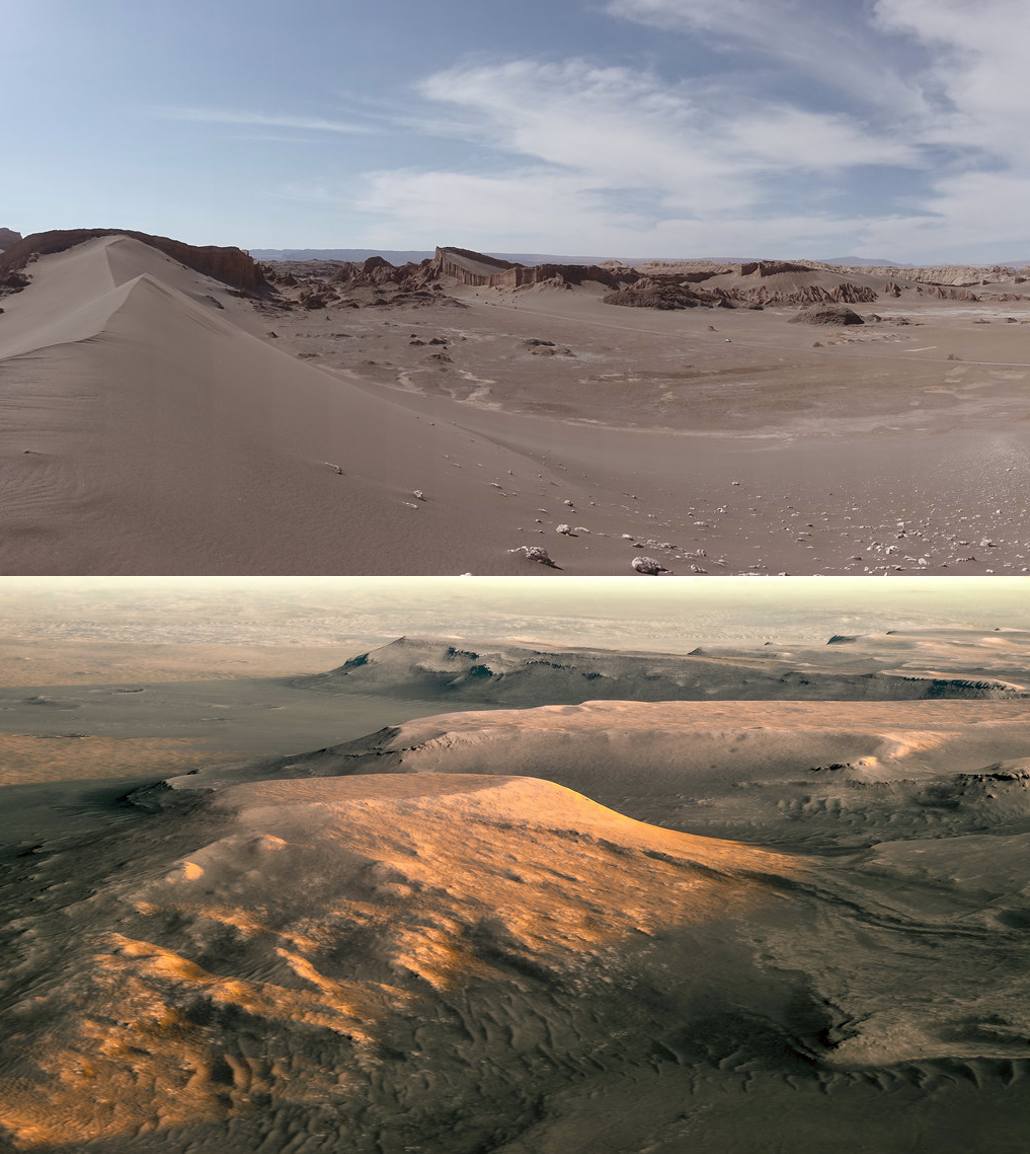Featured Image: Top: Valley of the Moon, Atacama Desert, San Pedro, Chile, Earth. Image courtesy Alf Igel. Bottom: Jezero Crater, Syrtis Major Quadrangle, Mars. Image courtesy Kevin M. Gill.
Paper: Gradient studies reveal the true drivers of extreme life in the Atacama Desert
Authors: D. Boy, R. Moeller, L. Sauheitl, F. Schaarschmidt, S. Rapp, L. van den Brink, S. Gschwendtner, R. Godoy Borquez, Francisco J. Matus, M. A. Horn, G. Guggenberger, J. Boy
Space. The final frontier. Or is it? Boy and colleagues are not presenting the voyages of the Starship Enterprise, rather the clever investigation of scientists on Earth. Their continuing mission: to understand the development of life in extreme environments, and how certain places on Earth geologically represent Mars and other planet analogues. While Boy and colleagues are limited on intergalactic travel, their recent work clearly the defines expectations, inferences, and consequences of using a site on Earth as a replacement for another planet. They conclude that the nearby climate and environment surrounding these analogue locations may lead to inaccurate comparisons, by altering soil moisture and salt content, for example.
While scientists may not have the technology found aboard a 24th century Galaxy Class starship, Boy and colleagues are striving to define how we research extraterrestrial analogues. Earth analogues are hyper-arid, desert environments similar to the surface of Mars. The Atacama Desert in Chile has long served as an ideal location for these studies. However, despite the seemingly identical climate to Mars, the desert is sandwiched between an ocean and a mountain range both teeming with Earth life. The abundance of life in these surrounding locations likely influences the Atacama Desert in previously unknown ways, therefore rendering any extraterrestrial conclusions somewhat meaningless.
A key aspect of ecosystem-wide research is to identify what factors cause environmental or ecological changes. For example, in the Pacific Northwest, the enormous rainfall “drives” the development of trees such as the Douglas Fir, which not only tolerates but also relies on the rain. Conversely, the aridity of deserts has been well-known as the main “driver” of evolution in desert plants and animals. So, Boy and colleagues aimed to tease apart these lesser-known components in desert analogue ecosystems.
To identify these drivers, Boy’s team sampled the soil of two transects across the Atacama Desert: the first running from north to south and the second running from east to west. Their goal was to find what environmental factors altered the soil moisture because available moisture alters (and in some cases controls) the chemistry, microbial life, and ultimately the larger desert ecosystem, being used to replicate Mars, as a whole. Amazingly, their findings indicated that the fog and precipitation from the flanking mountains and moisture from the ocean boarder influenced the desert’s soil moisture content.
Their work presents a tale of caution for future research in deserts as a replacement for Mars, reminding scientists exactly how nearby ecosystem features may be so far-reaching. This was clearly illustrated with the soil moisture in the Atacama Desert from the boarding mountains and ocean. Heightened moisture may facilitate microbial activity and chemical reactions, leading to different chemistry and biological interactions than expected.
Humans may not be getting to Mars yet, but our home planet affords us a glimpse into ecosystem functions we can expect. As we near 24th century Star-Trek technology, we may need to err on the side of caution with our 21st century results.
To understand Mars, scientists study Earth – but is this enough? by Jessica Buser-Young is licensed under a Creative Commons Attribution-ShareAlike 4.0 International License.

